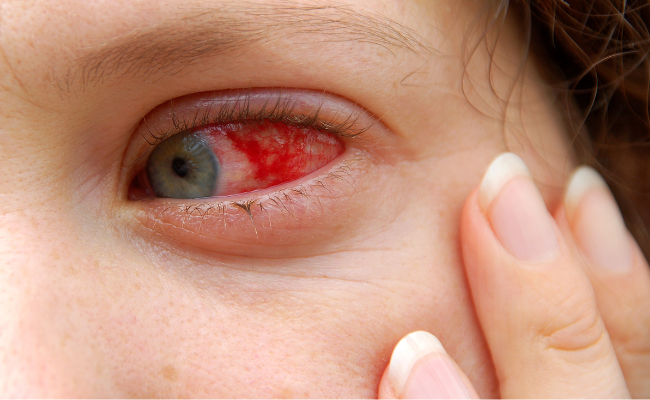How to Treat Conjunctivitis Adenoviral?
- February 05, 2024
- No Comments

What is Adenoviral Conjunctivitis?
Adenoviral conjunctivitis, commonly known as pink eye, is an infectious condition affecting the outermost layer of the eye. It is caused by the adenovirus, a highly contagious virus that can spread through contact with infected surfaces, respiratory droplets, and personal belongings. Adenoviral conjunctivitis is prevalent in both children and adults and can lead to discomfort, redness, and watery eyes.
Why Adenoviral Conjunctivitis Requires Special Attention?
Adenoviral conjunctivitis is unique in its ability to spread rapidly, particularly in crowded places, making it a public health concern. The virus is resilient and can survive on surfaces for an extended period, contributing to its contagious nature. The infection can affect one or both eyes, and symptoms often manifest within a few days after exposure.
How Does Adenoviral Conjunctivitis Manifest?
The primary symptoms of adenoviral conjunctivitis include redness, excessive tearing, a gritty feeling in the eyes, and a discharge that may be watery or pus-like. Patients may also experience sensitivity to light and swollen lymph nodes near the ear. The virus targets the conjunctiva, the clear membrane covering the white part of the eye and lining the inner surface of the eyelids, leading to inflammation and discomfort.
Treatment Solutions for Adenoviral Conjunctivitis
Addressing adenoviral conjunctivitis requires a combination of symptom management and preventive measures to limit the spread of the virus. While there is no specific antiviral medication for adenoviral conjunctivitis, the following treatment solutions can help alleviate symptoms and promote a faster recovery:
- Warm Compresses: Applying warm compresses to the affected eyes can help relieve discomfort and reduce swelling. The warmth also promotes blood circulation, aiding the body's natural healing process.
- Artificial Tears: Over-the-counter artificial tears can provide lubrication to the eyes, alleviating dryness and irritation. These eye drops can be used as needed throughout the day to maintain eye moisture.
- Topical Antihistamines: For cases where itching is a significant symptom, topical antihistamine eye drops may be recommended. These can help control allergic responses and reduce itching.
- Avoiding Contact Lenses: Individuals who wear contact lenses should temporarily switch to glasses during the infection to prevent further irritation and allow the eyes to heal.
- Good Hygiene Practices: Practicing good hygiene is crucial to prevent the spread of adenoviral conjunctivitis. Washing hands regularly, avoiding touching the face, and refraining from sharing personal items can help contain the virus.
- Isolation and Rest: Infected individuals should practice self-isolation to prevent spreading the virus to others. Getting adequate rest also supports the body's immune response, aiding in a quicker recovery.
Benefits of Adenoviral Conjunctivitis
- Reduced Discomfort: Swift initiation of treatment can significantly alleviate the discomfort associated with adenoviral conjunctivitis. Symptoms such as redness, itching, and a gritty feeling in the eyes can be mitigated, allowing individuals to go about their daily activities more comfortably.
- Faster Recovery: Prompt treatment contributes to a faster recovery from adenoviral conjunctivitis. While the infection is typically self-limiting, taking appropriate measures can expedite the resolution of symptoms, enabling individuals to return to their normal routine sooner.
- Minimized Duration of Symptoms: Adhering to recommended treatment solutions and preventive measures helps minimize the duration of symptoms. This is particularly important for individuals who may experience significant discomfort, as reducing the overall duration of the infection enhances the quality of life during the recovery period.
- Prevention of Complications: Timely management of adenoviral conjunctivitis can prevent the development of complications. Bacterial superinfections, which may occur when the eyes are already compromised by viral conjunctivitis, can be avoided through proper treatment and hygiene practices.
- Preventing Spread within Communities: Adenoviral conjunctivitis is highly contagious, and swift action helps contain its spread within communities. By isolating infected individuals, practicing good hygiene, and avoiding the sharing of personal items, the transmission of the virus can be minimized, protecting others from contracting the infection.
- Preserving Vision and Eye Health: Although adenoviral conjunctivitis itself is not typically associated with permanent vision damage, preventing the spread of the virus contributes to overall eye health. By protecting the eyes from secondary bacterial infections and complications, individuals can maintain optimal visual acuity.
- Enhanced Comfort for Children: Children, who are often more susceptible to adenoviral conjunctivitis due to close contact in schools and daycare settings, can benefit significantly from prompt treatment. Addressing the infection promptly ensures that children experience minimal disruption to their daily activities and reduces the likelihood of spreading the virus to peers.
- Minimization of Economic Impact: Swift resolution of adenoviral conjunctivitis helps minimize the economic impact on individuals and communities. Reduced absenteeism from work, school, and other activities contributes to overall productivity and well-being.
- Patient Compliance: When individuals experience prompt relief from symptoms through timely treatment, they are more likely to adhere to prescribed interventions. This fosters better patient compliance, leading to a more effective management of the infection.
- Public Health Benefits: Emphasizing preventive measures not only benefits individuals but also contributes to public health. By educating communities about the importance of hygiene practices, isolation, and early treatment, the overall incidence of adenoviral conjunctivitis can be reduced, protecting vulnerable populations.
Comments (0)